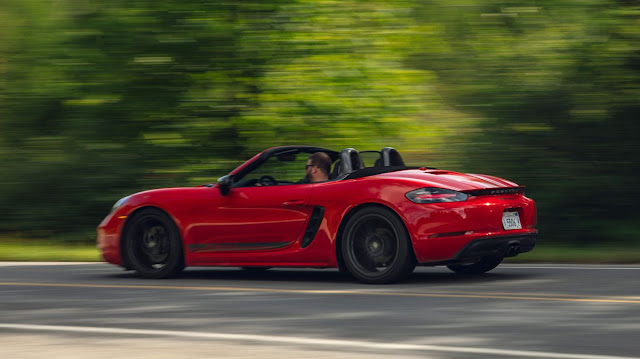2024 Hyundai Kona vs. 2024 Subaru Crosstrek: Mission Matters
Which small SUV gives its buyers more of what they want?
Not every comparison has a clear winner and loser. When driver engagement and other factors are virtually even, it's down to intangibles like mission fulfillment to determine which vehicle best represents its future owners' needs. Even then, as is the case with subcompact SUVs like the 2024 Hyundai Kona and 2024 Subaru Crosstrek, mere hairs can span the gap between first and second place. Their intended audiences might be radically different, but both of these cars are quite good at doing what they set out to.
The Kona nameplate turns seven years old, while Crosstreks have littered REI parking lots for more than a decade. Each enters a new generation for 2024, with the Hyundai becoming bigger and more visually extroverted and the Subaru adding cladding and getting more refined. To compare models from both lineups with the mightiest engine and the closest base prices, we gathered a Crosstrek Limited and Kona N Line. The Hyundai cost $34,145 because of two-tone paint and floor mats, while the Subaru's $35,030 as-tested price was inflated by $2840 worth of extra-cost paint and a package containing sunroof, stereo, and navigation add-ons.
2nd Place: Hyundai Kona N Line
More than any other small ute, the redesigned Hyundai Kona looks like it fell out of a Ridley Scott fever dream. The outgoing generation was boldly styled, but the new one goes even further—some of us called it good-looking; others said it looks goofy. The N Line guise is purely superficial, mainly replacing the gray fender surrounds with body-colored pieces and adopting an angrier mug.
HIGHS: Sci-fi-movie styling, airy interior with a big back seat, smart storage features.
LOWS: Sci-fi-movie styling, extra size sacrifices driving verve, fuel economy takes a hit.
VERDICT: The new Kona is a better people mover—physically, but not emotionally.
The new Kona is up to 6.6 inches longer overall, and its wheelbase has been stretched 2.3 inches. It now closely mirrors the Crosstrek's dimensions, but the slightly taller Kona has better interior packaging that makes it feel more spacious, and the back seat is now roomy enough to be considered Uber-grade. Along with superior passenger space, its dash looks more Space Age than the Subie's, which still has analog gauges. Along with the Hyundai's slick dual displays and physical switchgear, we admire the cabin's many clever features, like the dashboard storage shelf and the shapeshifting center console.
Sadly, the Kona's growth spurt sapped some of its on-road charm. Blame the extra mass and longer wheelbase for its reduced nimbleness. At least it remains a dutiful—albeit comparatively dull—driving partner. Despite 19-inch wheels and narrow sidewalls, the Kona's taut ride limits body roll without letting too many bumps reach our backsides. The thin-rimmed steering wheel is quick to respond, which is nice when darting around town but darty at highway speeds.
The N Line packs a carryover turbocharged 1.6-liter inline-four making 190 horsepower, but it now bolts to a conventional eight-speed automatic transmission that fixes the clunkiness of the old seven-speed dual-clutch unit. Throwing an extra 200 pounds of curb weight into the equation, the 2024 Kona turbo 1.6-liter AWD takes 7.5 seconds to hit 60 mph, nearly one second slower than a 2018 example we tested. The new Kona's powertrain still feels sprightly thanks to eager throttle tip-in, and it outraces the 2.5-liter Crosstrek in every acceleration metric, but it's still a bit of a downer to see acceleration take a hit.
While the Kona beat its 29-mpg-highway EPA estimate during our 75-mph real-world test, its 31-mpg result trails both its predecessor by 1 mpg and the Crosstrek by 4 mpg. The Hyundai's combined rating also drops from 29 to 26 mpg for this new generation. Ouch.
Sure, the new Kona has lots of stretch-out space, but so do other subcompact SUVs like the Chevy Trax and VW Taos. Plus, despite packing more cargo volume than before, the Hyundai held the same seven carry-on suitcases behind its rear seats as the Crosstrek. Fold their seatbacks, and we fit two more suitcases in the Subaru (22 total) than the Kona.








